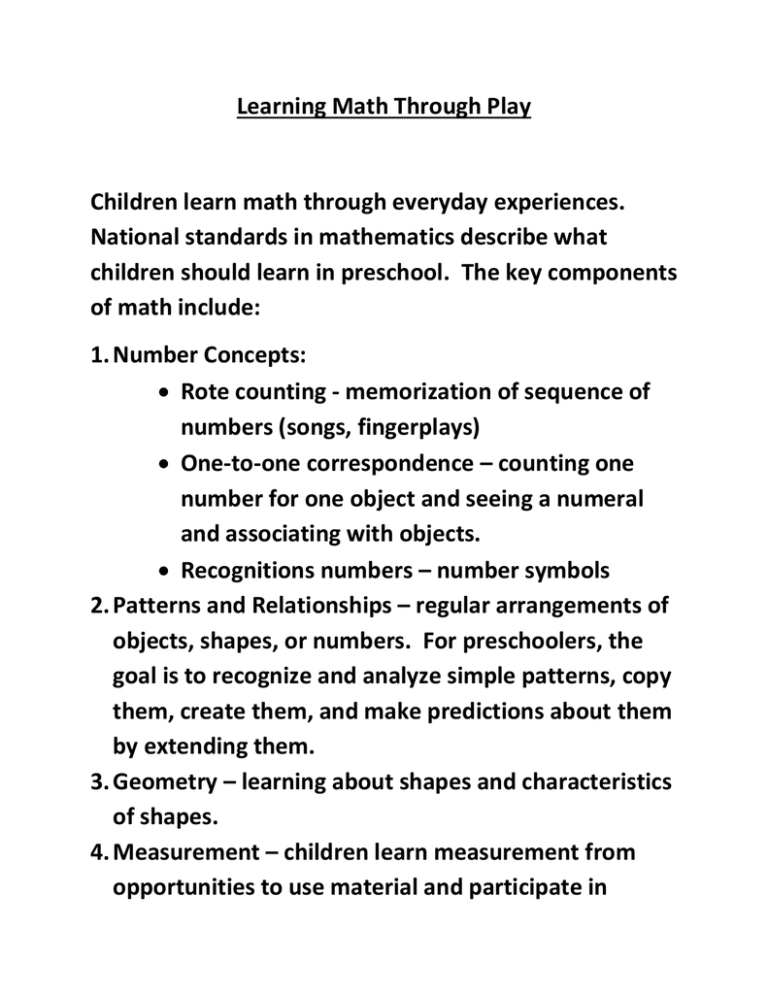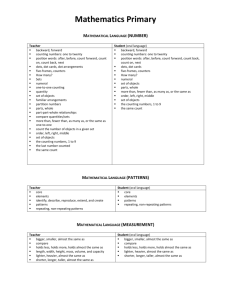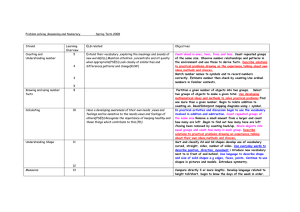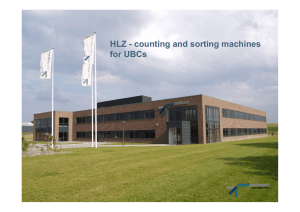Learning Math Through Play Children learn math through everyday experiences.
advertisement

Learning Math Through Play Children learn math through everyday experiences. National standards in mathematics describe what children should learn in preschool. The key components of math include: 1. Number Concepts: Rote counting - memorization of sequence of numbers (songs, fingerplays) One-to-one correspondence – counting one number for one object and seeing a numeral and associating with objects. Recognitions numbers – number symbols 2. Patterns and Relationships – regular arrangements of objects, shapes, or numbers. For preschoolers, the goal is to recognize and analyze simple patterns, copy them, create them, and make predictions about them by extending them. 3. Geometry – learning about shapes and characteristics of shapes. 4. Measurement – children learn measurement from opportunities to use material and participate in hands-on activities. Children learn concepts – longer, shorter, heavier, lighter, faster, and slower. Children use : Standard measures – rulers, scales, measuring cup and spoon, scales, thermometers. Non-standard measures – using hands, feet, string, bears, etc. 5. Classification, Sorting and Matching – group or separate things into categories. 6. Ordering (seriation) – ordering things in a sequence that leads gradually from the smallest to the biggest. 7. Graphing – is a direct extension of sorting and classifying. As a visual representation of data, it helps children see relationships. Graphing is a way for children to display many different kinds of information in different forms.



